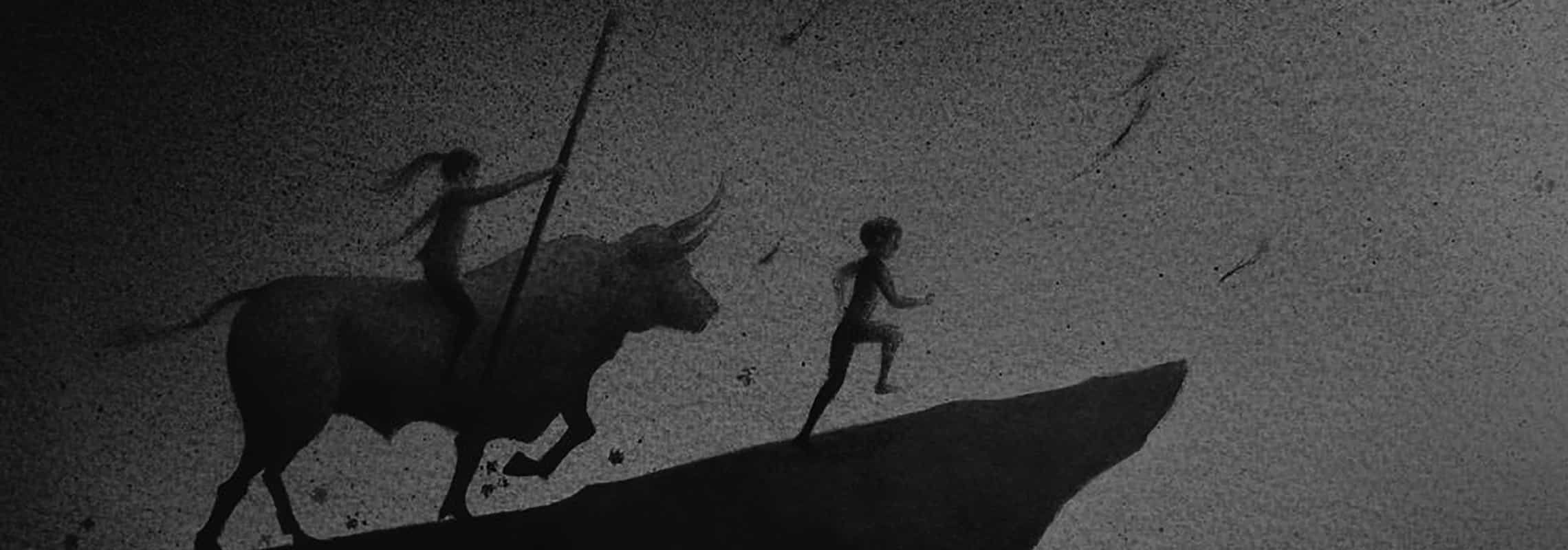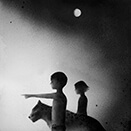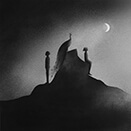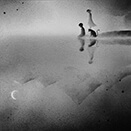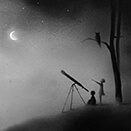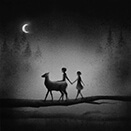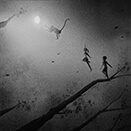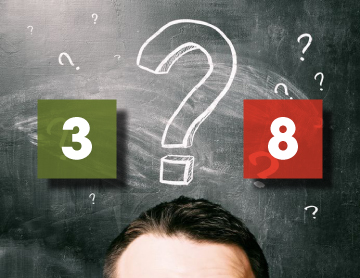~ Felix Mendelssohn
Introduction
Music is a therapy that helps us reach inside ourselves in an authentic and meaningful way – it takes us to a place where we can fully experience our thoughts and feelings in all their complexity and beauty. For aeons, the psychological, physiological and emotional benefits of music have been widely recognised by psychologists and healers across different cultures and professions. Now it has been identified by a renowned musician and artist as a powerful way to translate the Enneagram to an artistic medium.
Ryan O’Neal, the musician behind Sleeping at Last, has composed a song for each Enneagram type, crafting a compassionate and personal message for his audience.
Using a compassionate and authentic process
O’Neal refers to the Enneagram as a “wonderful tool for empathy, a tool for excavating a person’s essence”, and has used the Enneagram extensively in his own journey of personal growth. O’Neal wanted to compose these songs to reflect each Enneagram type’s journey to show the ‘story of redemption’ as each Type moves from fixations and current troubles to see their own staggering beauty and brilliance.
His Enneagram series fits into a more extensive musical journey that he refers to as the Atlas series, which is an ongoing sequence of songs inspired by the origins of all things (for instance, darkness, light, space, land, oceans). This series expands to include the journey of the human race and our constant quest to improve our self-awareness.
Little known is the effort, research and time O’Neal takes in composing these ‘odes’ to truly capture the essence of the Type.
In researching the Enneagram types for these songs, he worked in close conjunction with the author of The Sacred Enneagram, Chris Heuertz, and with the author of The Enneagram: A Christian Perspective, Father Richard Rohr. Once O’Neal starts to compose the music and lyrics, he prides himself in staying true to the Type by compassionately and authentically creating each song, by only calling on musicians of that Enneagram Type to feature. He even asks family members and friends of that Type to send him what he refers to as ‘fingerprints’ (which are a set of unique sound clips taken from their life and surroundings) which he incorporates into the songs. These can be further explored by listening to his podcast for each Type, found by clicking here.
Listen to the songs
If you haven’t heard the song for your Type, find the links to each song. Alternatively, follow the hyperlink in each song for the YouTube version below.
The message for each Type
The Type-specific songs each represent a ‘journey to redemption’ which is explored in the melody and lyrics. O’Neal also imparts a message for each Enneagram Type in their song (shown in italics below).
O’Neal introduces the Enneagram One song as a conversation between the One and their extremely harsh self-critic. This song communicates an often-misunderstood truth about Ones that they do not need everything to be perfect, always. Rather, they see the potential to be so and feel they must try to pursue it. In the song, O’Neal shows how the Enneagram One works so hard to earn and be worthy of the grace they want and desire in the world. Towards the end of the song, the One accepts that they cannot bear that responsibility on their shoulders and that really, they, and everything in the world is perfect in its imperfection. “The cost of this so-called perfection costs everything… Cause I’ve spent my whole life searching desperately to learn that grace requires nothing of me”. |
A warm, hospitable and welcoming song introduces the Enneagram Two. Lyrics move from describing an almost excessive and obsessive degree of love for others to a more sombre, contained and sustainable realisation that, it is a privilege to love others, but it means nothing if the Two does not love themselves. A healthy Two learns to love themselves, to understand and take care of their own needs. As the lyrics say, “I just want to love you, to love you, to love you, and I just want to learn how to somehow be loved myself.” The song closes with the image of a healthy Two who can love others without any expectation or hidden intention because they are whole in themselves. “I will love you without a single string attached…” |
With subtle references to the driven, successful and hardworking nature of the Three, O’Neal tells the story of the healthy three when they realise that “Maybe I have done enough”. The song helps Threes reach a place of letting go – letting go of their need to achieve and recognising that their value is not at all tied to their success, their achievements and the feedback of others. Rather, a Three should realise that they are worthy of love regardless of whether they succeed or fail. The greatest success that they can achieve is to evolve into a ‘real’ and ‘authentic’ person, in discovering who they are. “Now I only want what’s real, to let my heart feel what it feels…... I finally see myself, unabridged and overwhelmed, amazed at the story I’m ashamed to tell, but I’m slowly learning how to break the spell. I finally see myself. Maybe I have done enough, see an image of my brokenness, maybe I am worthy of love.” |
|
Incorporating fascinating creative imagery, artistic and poetic references, this song seeks to celebrate the creative beauty that the Enneagram Type Four brings to the world. O’Neal seeks to represent the healthy Four who has centered themselves, can breathe into the present moment and be at peace with what they don’t have. “Bodies fashioned out of dirt and dust, for a moment we get to be glorious. What if we already are who we have been dying to recall, in certain light I can plainly see the reflection of magnificence hidden in you, maybe even in me.” In these lyrics, the Four is no longer controlled by the deep yearning for more depth and intensity. Rather, they are balanced, able to sit amid joy and sorrow and hold these in tension, knowing that “I belong, I am here for a purpose”. In this way, they can align the truth of their own inner significance to reality. |
The longest song of the series celebrates the Five’s value of data and information. The lyrics focus on Fives trying to wrap their head around the universe and how it works. However, as the Five spends so much time lost in his/her thoughts, they feel lost to their bodies and become isolated from connection to others. The lyric, “I finally feel the universe expand, it’s hidden in heartbeats, exhales, in the hope of open hands”, refers to the healthy Five being truly in the present and exploring a new way of feeling alive. As the song begins in distance, it ends in intimacy as the Five recognises that it is not what you have (energy, knowledge), but how you hold it and share it with others. |
|
O’Neal refers to Sixes as the ‘Guardians of the Enneagram’. However, the lyrics depict how many Sixes struggle to have their mind be present and not focus on worst case scenarios. He encourages Sixes to ‘give in’ to the flow, as what makes us human is that we stumble forward and sometimes are unprepared, in this unpreparedness is much of what makes life beautiful. When Sixes realise that they have all they need and that they are enough, they gain the key to their redemption, which is that they can be a sanctuary for not only those they love, but also for themselves. “Then I realised, I want to believe, I choose to believe, that I was made to become a sanctuary, fear won’t go away, but I can keep it at bay, these invisible walls just might keep us safe, with a vigilant heart I push into the dark and I learn to breathe deep and make peace with the stars, is it courage or faith to show up every day, trust that there will be light/life always waiting behind even the darkest of nights and no matter what, somehow we will be okay.” |
Like the Enneagram Seven, this song is fun, high-energy and positive. It gently gives the message that, if the Seven embraces sobriety on their journey of integration, they will be able to accept that what they have is enough and that they can be satisfied with the good times as well as the sorrowful, with great excess as well as with very little. This is beautifully represented in the line, “But I want to be here, truly. Be. Here. To watch the ones that I love bloom. And I want to make room to love them through and through and through the slow and barren seasons too.” O’Neal sends the message to Sevens that some of the most meaningful and remarkable experiences are found exactly where you are, on the other side of pain, with other people. |
Like the typically tough Enneagram Eight, this song starts with a bold and strong melody. As the song grows, the music changes from strength and power to represent innocence and vulnerability. The line, “I’m all in, palms out, I’m at your mercy now, and I’m ready to begin. I am strong, I am strong, I am strong enough to let you in” represents the integration journey of the Eight as they realise that in developing compassion for themselves and reconnecting with their innocent inner child, they do not become weak. Ultimately, real strength comes from being vulnerable or ‘woundable’, in softening the arms and letting others closer. |
Starting out timidly and quietly, this song gradually grows in confidence and strength to represent the Enneagram Nine’s story of redemption. O’Neal, who resonates as an Enneagram Nine, tells the very personal and vulnerable account of his own ‘waking up’, as he realised that he had been ‘sleepwalking’ through his life, not fully present or showing up with his whole self. The impactful lyrics, “We were born to try, to see each other through. To know and love ourselves and others well is the most difficult and meaningful work we’ll ever do”, encourages Enneagram Nines to actively say ‘yes’ to themselves, their opinions, needs, voice and big picture brilliance. Ultimately, when they are more awake to themselves, Nines find the deep, empathetic connections they seek with those who they love. |
Summing up
O’Neal is an artist who is well-known for his highly creative and conceptual albums, but we can’t help but think that this might be one of O’Neal’s most evocative pieces. Music has and always will resonate with us in profound and powerful ways, but fans agree that nothing quite compares to hearing a song that has been composed explicitly for your unique personality profile and by people of your same Enneagram Type. We love that O’Neal has carefully and accurately crafted each song to empathise with the core fears and unique strengths of each Enneagram Type. This beautiful process is just one of the ways that the Enneagram can be used to enhance an artistic journey and celebrated in this beautiful, compassionate way. Writing this blog, we were amazed that O’Neal has such a compassionate, informed and empathetic eye for the struggle of each Type.

 What is the Enneagram?
What is the Enneagram?
 Introduction to the 27 Subtypes
Introduction to the 27 Subtypes
 Introduction to the 3 Centers
Introduction to the 3 Centers
 Wings
Wings
 Lines and Integration
Lines and Integration
 Enneagram History & Origin
Enneagram History & Origin
 Enneagram for Myself
Enneagram for Myself
 Enneagram for Practitioners
Enneagram for Practitioners
 Enneagram for Business
Enneagram for Business
 iEQ9 Individual Reports
iEQ9 Individual Reports
 iEQ9 Team Reports
iEQ9 Team Reports
 iEQ9 Questionnaire
iEQ9 Questionnaire
 Training Events
Training Events
 Level 1 iEQ9 Accreditation
Level 1 iEQ9 Accreditation
 Level 2 Enneagram Team Dynamics
Level 2 Enneagram Team Dynamics
 International Enneagram Conference
International Enneagram Conference
 iEQ9 Community of Practice Events
iEQ9 Community of Practice Events
 About Integrative9
About Integrative9
 Meet the Faculty
Meet the Faculty
 Testimonials
Testimonials
 Contact Us
Contact Us
